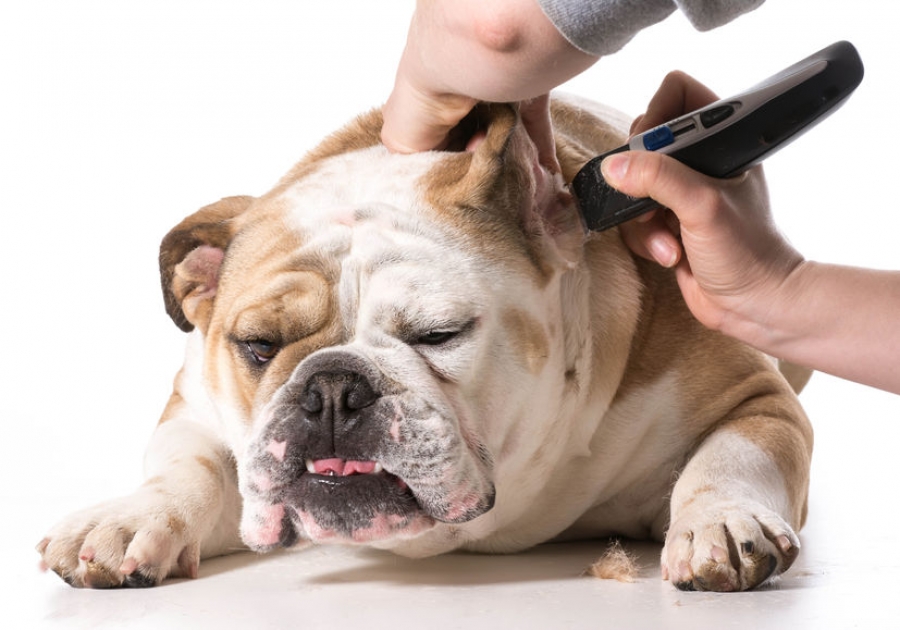Whether or not to visit professional groomers on a regular basis is a dividing theme among pet owners. Some pet owners consider it a luxury, while for others is an essential necessity. However, although it is true that we love spoiling our canine furry friends it is also true that regular visits to professional grooming salons can be quite costly.
At the end of the day, perhaps compromising is the best option. In this case, the compromise would be to make occasional visits to professional groomers and groom your dog at home in the between periods. Who knows, maybe after you get used to the grooming ritual you might not even need to pay for professional grooming treatments because you have become so good at it yourself.
It is important to mention that all breeds of dog need grooming. The difference between breeds is time period between two grooming treatments and the time that needs to be spent on grooming.
To make things easier, we have compiled a list of the 3 must own grooming tools. Keep in mind that mastering the art of home grooming takes a little bit of practice and patience.
Suitable Shampoo
Proper grooming requires using proper tools. Tool number one would be the shampoo you use to clean your pet with. When in need of shampoo, most dog owners won’t hesitate to use their own shampoo and conditioning products on their dogs. However, that is not a good decision. Although there is no doubt that human shampoos are efficient in cleaning a dog’s coat, it has been scientifically demonstrated that they are not good for the dog’s skin.
Simply put, humans and dogs have different pH balances of the skin. The human skin is more alkaline while the dog skin is more acidic. Therefore using a human shampoo on a dog skin disrupts the natural pH balance, thus creating an environment where bacteria, parasites, and viruses can successfully grow and thrive.
Fortunately, today there are many shampoos designed specifically for dogs. For example, there are:
- General purpose shampoos
- Hypoallergenic shampoos
- Flea shampoos
- Puppy shampoos
- Medicated shampoos
Grooming Clippers
It is not advisable to just clip your dog’s hair. Proper grooming requires following certain protocol:
- Brushing or combing – important for mechanical removal of dirt and debris and for unclogging tangled hairs.
- Washing – this part includes wetting, shampooing, and rinsing.
- Trimming or clipping your dog’s coat.
When using dog grooming clippers you need to keep in mind that certain areas of your dog’s body are thinner and therefore more prone to clipping related traumas and injuries like cuts and bruises. The most sensitive areas include the face, area around the eyes, ear flaps, armpits, bellies, sanitary areas, toes and legs’ tendons. These areas should be clipped with extra care and caution.
It is of imperative importance to never use human clippers on your dog. Human clippers have only one length of the blade and since that length is often too short for dogs, it can cause skin burns. Human clippers also produce much more heat and are less powerful when compared to dog clippers. If you plan on grooming your dog at home on a regular basis, it is of paramount importance to obtain a good dog clipper. High-quality dog clippers cost around $100 and above, but at the end, you get what you pay for. Dog clippers are an investment that pays off.
Flea Comb
Fleas can carry a plethora of diseases and can cause a skin condition known as flea allergy dermatitis (FAD). FAD is defined as sensitivity to the fleas’ saliva and it is by far the most common skin issue in dogs. Flea bites lead to excessive scratching and can trigger secondary bacterial skin infections. Since fleas feed on blood, very heavy flea infestations in a small dog or pup can cause anemia due to blood loss.
Simple bathing does not get rid of fleas. If your dog has fleas you need to use an effective flea-control product on both your dog and its environment. Additionally, it is beneficial to use a special flea comb.
Flea combs are specially designed comb with one or more sets of metal teeth capable of smoothly picking up the fleas. Some flea combs have its metal teeth turned at a ninety-degree angle away from the handle to ensure more comfortable use.
When combing, start by cleaning one area and then proceed to the next. Be thorough and patient and do not forget to comb the undersides and the area around the rump. After you combed your entire dog, wait a few minutes and then start combing it once again. This allows the remaining fleas to move around and increases the chances of catching them during the second combing.
It is advisable to perform the combing outdoors and always prepare a bucket with hot water and soap intended for effective flea disposal.

